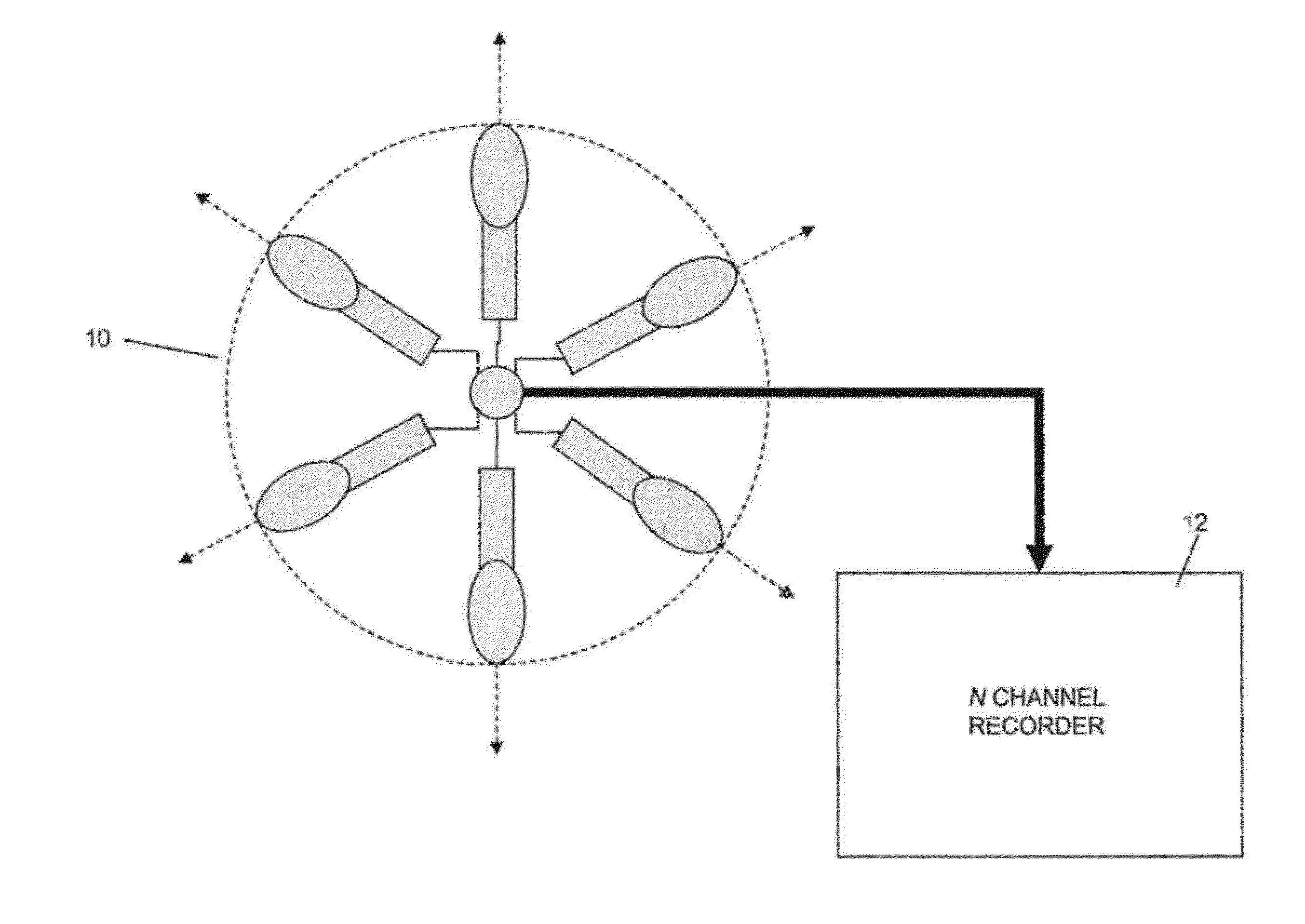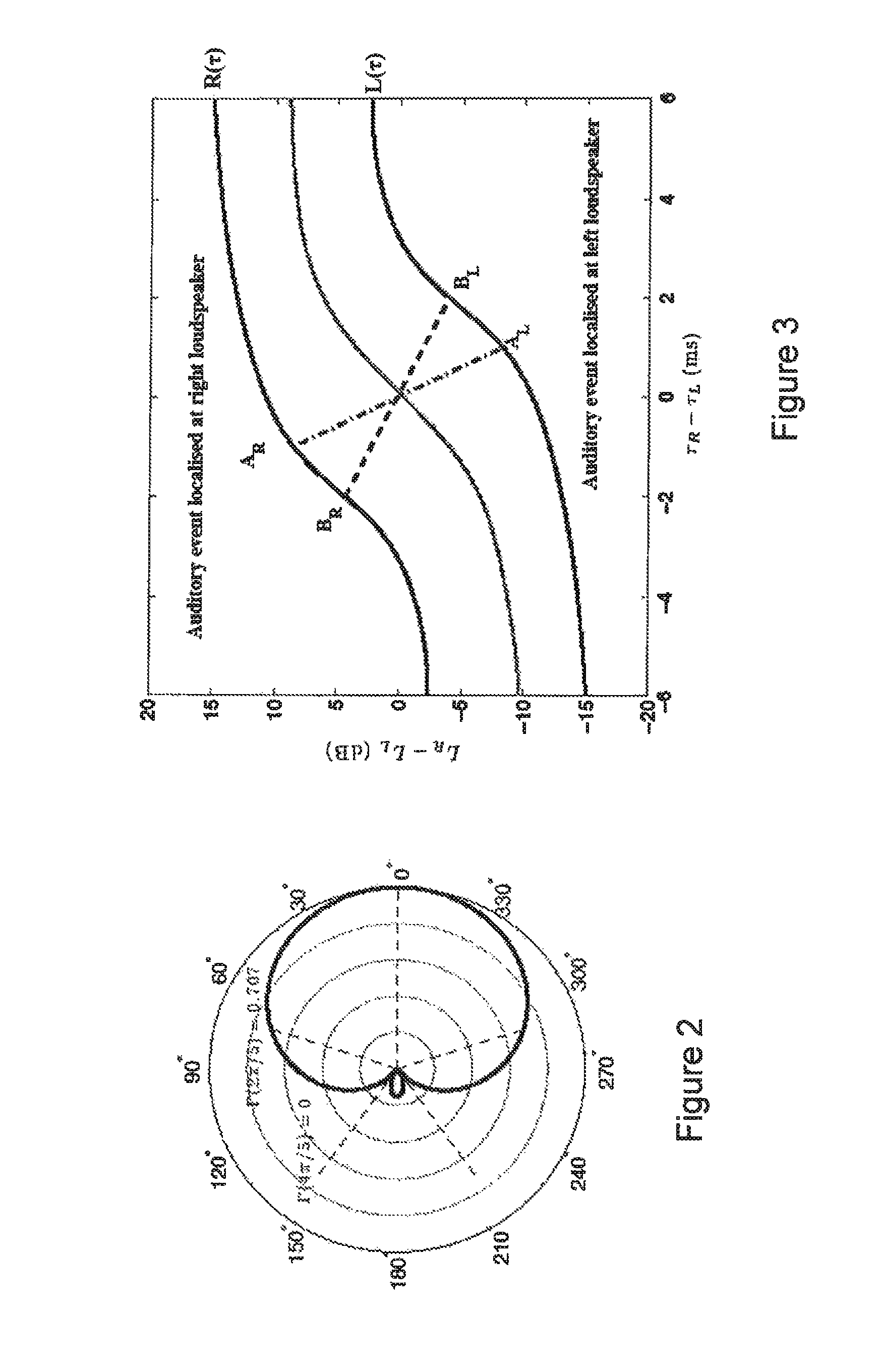Microphone array
a microphone array and array technology, applied in the field of microphone arrays, can solve the problems of inability to guarantee the perception consistency of the reproduced audio with the actual recording environment, requires significant computational resources and a large number of channels, and is not feasible in a domestic setting. to achieve the effect of reducing cross-talk
- Summary
- Abstract
- Description
- Claims
- Application Information
AI Technical Summary
Benefits of technology
Problems solved by technology
Method used
Image
Examples
first embodiment
[0077]The aim of the proposed microphone array of the first embodiment is to have at most two loudspeakers active for a single plane wave. For example, if the plane wave is incident from an angle, θ, such that
[0078]2πkN≤θ≤2π(k+1)N
for a circular array, only the loudspeakers k and k+1 should be effectively active. This constraint allows using stereophonic panning laws for designing the common microphone directivity pattern. As described, two rules are employed for this purpose: i) cross-terms, γmk(θ) for non-consecutive microphones, m and k, should be minimized, and ii) directivity function should approximate stereophonic panning laws for directions of incidence between consecutive microphones.
[0079]Assuming a smooth directivity function, Γ(θ), the cross-talk terms can be minimized by designing the directivity function to be zero (or effectively zero) at θ=2πk / N for k≠m. In this way, a sound wave incident from an angle between two consecutive microphones will be reproduced by the...
second embodiment
[0115]In order to actually find the directivity function which meets the cross-talk criterion, and also the time-intensity panning curve as explained above, within the second embodiment the conditions stated above can be imposed analytically as a constrained linear least-squares optimisation problem on the coefficients am in
[0116]Γ(θ)=∑m=0Mam[cos(θ)]m,
as follows:
[0117]minaGma-ψ22suchthat{Gta≤βGza=0
where
Gm=[cospθm,q] q=0 . . . Qm p=0 . . . M,
Gt=[cospθt,q] q=0 . . . Qt p=0 . . . M,
a=[a0a1 . . . aM]T,
ψ=[g(τ(θm,0)) . . . g(τ(θm,Qm))]T,
β is the maximum allowable crosstalk level between non-consecutive channels, 0≦θm,q≦2π / N, 2π / Nt,q≦π, and θz,q=2πi / N, for i=2, . . . , N−2. Here, θm,q are the angles at which the difference between the directivity function and time-intensity panning gain is minimised, θt,i are the angles at which the cross-talk constraint is applied, and θz,q are the angles at which the directivity function is constrained to be zero.
[0118]FIG. 6 shows the di...
PUM
 Login to View More
Login to View More Abstract
Description
Claims
Application Information
 Login to View More
Login to View More - R&D
- Intellectual Property
- Life Sciences
- Materials
- Tech Scout
- Unparalleled Data Quality
- Higher Quality Content
- 60% Fewer Hallucinations
Browse by: Latest US Patents, China's latest patents, Technical Efficacy Thesaurus, Application Domain, Technology Topic, Popular Technical Reports.
© 2025 PatSnap. All rights reserved.Legal|Privacy policy|Modern Slavery Act Transparency Statement|Sitemap|About US| Contact US: help@patsnap.com



